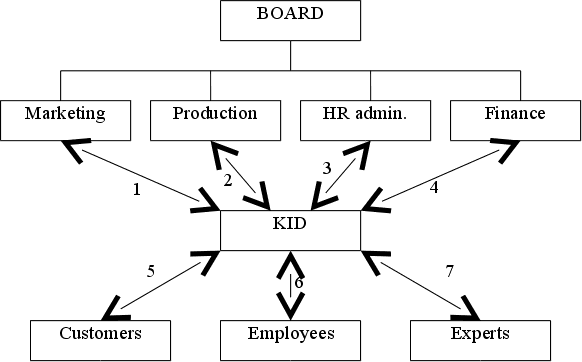
Рефераты по рекламе
Рефераты по философии
Рефераты по финансам
Рефераты по химии
Рефераты по цифровым устройствам
Рефераты по экологическому праву
Рефераты по экономико-математическому моделированию
Рефераты по экономической географии
Рефераты по экономической теории
Рефераты по этике
Рефераты по юриспруденции
Рефераты по языковедению
Рефераты по юридическим наукам
Рефераты по истории
Рефераты по компьютерным наукам
Рефераты по медицинским наукам
Рефераты по финансовым наукам
Рефераты по управленческим наукам
Рефераты по строительным наукам
Психология педагогика
Промышленность производство
Биология и химия
Языкознание филология
Издательское дело и полиграфия
Рефераты по краеведению и этнографии
Рефераты по религии и мифологии
Рефераты по медицине
Рефераты по сексологии
Рефераты по москвоведению
Рефераты по экологии
Краткое содержание произведений
Рефераты по физкультуре и спорту
Топики по английскому языку
Рефераты по математике
Рефераты по музыке
Остальные рефераты
Топик: Knowledge, Innovation and Development
Топик: Knowledge, Innovation and Development

The KID
Written by: Kuropatkina Serafima
Saint-Petersburg
1998
Kuropatkina S.N.
1.Moving into the future
Knowledge is the thing that makes a difference. It is matter of being better informed than the others, getting ideas before the others, - these are the things that allow some companies to take off and remain leaders for a long time. In the past knowledge and innovations didn't play an important role in company management. The impact of these factors on the competition wasn't very big and obvious. From the second half of 19th century industries and management started to develop rapidly and by the end of 20th century inventions have penetrated all spheres of production, business and human life in general. Competition has dramatically increased, creating the necessity for each company to improve and develop constantly. We are moving into the future where it is not possible to win the game using traditional methods. This proves a need of a separate structure within each company that would deal with existing knowledge, innovative ideas, development of production process and working life. It is essential to design a completely new department. Let’s call it - the department of Knowledge, Innovation and Development (KID). This system also will allow the company to avoid high opportunity costs of not doing some improvements which could reduce costs and give rise to profits. Let's take a close look on the KID department, its functions and structure.
2.The department of Knowledge, Innovation and Development (KID)
2.1KID's functions
The general functions of the KIDare:
to solve different problems that come up in a company using known methods or new ideas of the employees;
to constantly develop company's production cycle and products
to give aid to all departments concerning possible improvement and elimination of drawbacks
In order to fulfill its general functions KID will carry out the following subfunctions:
receiving fresh ideas or problems from staff of different departments
selecting the most useful and relevant ideas and checking the existence of the problem
developing ideas and problem solutions (if needed) to level required for implementation
making the final decision in cooperation with the department(s) involved
implementing the developed idea
controlling the implementation process, altering if necessary
evaluating the outcome, calculating financial results
rewarding the idea maker
changing the corporate culture and working environment towards creativity and innovation values.
2.2Structure of the KID department
In correspondence with its main activities the KID should consistof the following departments:
gathering and filtering department (organizes research, selects ideas, checks the relevance of problems, responds to idea proposers and customers)
developing department (works out solutions to problems pointed out by employees or customers, invites authors of good ideas for closer cooperation)
executive department (plans, runs, controls implementation process, negotiates with other departments)
social relations department (deals with motivation, awards, customer relations and different social activities)
At first the department 2) should closely cooperate with present R&D. In the future R&D can become subject to 2).
3.How to create a KID?
Creation of KID must be supported on the highest level of management. Without this nothing can happen.
3.1Preliminary activities
First we must analyze how innovative is the company. How often changes take place. Who proposes them. How do workers feel about sharing the ideas. Do their ideas get attention? This will show the present situation and allow us to estimate the how much time and resources KID creation will take.
Next step is to introduce to everyone in the company the new department, to explain its purpose and functions, to show how the company and every single employee will benefit from it.
Then allocate the people and resources and create the department itself. For the beginning KID can be formed with existing managers and experts. But when many companies are going to be using similar systems they will need specially trained workers. Faculties should be designed in universities and colleges teaching students to deal with new ideas and to use existing theories and experience of preceding generations in order to solve problems and develop their company.
3.2Designing information flows
As a part of organization’s information system we must work out a mechanism of idea and problem flow from the employees and customers to the KID. Among the numerous motivation theories there are theory X and theory Y. X suggests that the worker is passive and needs to be closely controlled and forced in order to get results. Y - the worker is creative and eager to work. He just needs proper conditions to show himself. I went further. I believe that there are two types of workers in the company - X and Y, active and passive. That's why the KID needs two approaches. For example:
open entry - every worker can come to the gathering department directly or put his ideas in written form into special bins that would be available at his working place. This way the employees will be able to express their thoughts at any desired time;
obligatory interviewing - from time to time KID will give out to workers questioners which they must fill. These could consist of the following questions:
"Have you noticed any problems concerning the work of your department? Have you any suggestions on how to solve them?"
"Is there anything you'd like to improve in your department and in the whole company? How (your suggestions)?"
"How do you feel about our company’s products (services)? How can they be developed or improved?" Etc.
The interviewing should be carried out at all departments, but not at the same time. This will allow to avoid conjunction at the gathering and filtering department.
3.3Motivation
Motivation of the workers. We must estimate the level of actual needs of employees and develop a mechanism of motivation universal for every worker. There can be many motivating factors. They depend on the economic conditions in the country, standards of living and financial situation in the company. Money, job promotion, board of honor, competition of ideas with prizes, etc. Motivation through corporate culture is also required. We can put posters in often visited places. Posters may say:
"By participating the KID's activities you will help your company, improve your work and life!"
"Be company patriotic!"
"Be a perfectionist. Spot a problem - tell the KID about it!"
"Give us ideas because nobody knows your work better then you!"
etc.
3.4Cooperation with experts
We need to organize cooperation with specialists. It isn't useful to have our own staff of experts because:
they will not always be logged with work and this will produce extra costs
they will soon become useless because they will be drawn away from current work of their departments.
We also must investigate whom we can rely on. Not all experts innovative and understand the necessity of change. Cooperation with KID will be part of responsibilities of those experts who work with it.
Organize cooperation with management of different departments. An order to implement any idea must come directly from the management of the department involved.
3.5KID's position within the company
The scheme of KID's position in the company can look like this:

Kid provides each department with its services. Department in return provide KID with some information, resources etc. The connections are:
Marketing department provides information received from different marketing research. Specifies the situation on the market. Gives feedback on KID's activities (have the sales increased? how much?)
Production department gives feedback on KID's activities (has productivity increased? how much?)
Human resource administration cooperates with KID closely. Helps it with motivation.
Financial department provides KID with money for all activities (within the budget of course). Gives feedback on KID's activities (financial results figures, information about changes in costs and revenues).
Customers give KID valuable feedback about products and services.
Employees give KID ideas, cooperate with it and receive rewards for their work.
Experts work with KID on specific problems.
3.6Control functions of the KID
If the innovation is complex we must monitor closely the field of implementation and if problems occur - take care of them immediately.
Collect feedback from all people related concerning the results. Taking action if necessary. Remember that no change comes without negative response. Calculate results (based on financial information, information about productivity and costs, etc.). Reward the idea author depending on these figures. Tell everyone about this "great man, who helped to the company so much".
3.7Customer relations
Customer feedback must also come to the KID, not marketing department. Marketing department doesn’t have direct stimulus to analyze information related to other departments. It might have difficulties making changes in other departments due to lack of power.
The KID system is not of course ideal. It is just a draft, an idea of what could be developed into a universal model. But as I see it - every company that wants to succeed in the coming high-tech future must start to develop such a system as soon as possible.